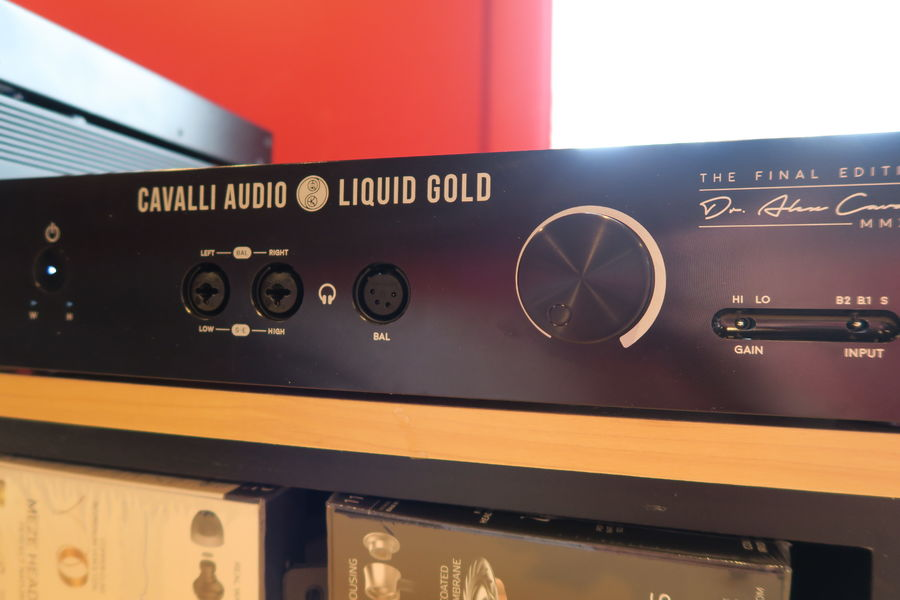-
Posts
7,192 -
Joined
-
Last visited
-
Days Won
21
Content Type
Profiles
Forums
Events
Everything posted by kevin gilmore
-
I don't believe that Mikhail ever sold it. At the time he said it was about $6k to gold plate it. And I don't believe that, probably more like $1k. He did try and sell it a couple of times for $35k or so I was told.
-
the board is the dual servo one, I thought I published the final schematic, will have to look
-
That schematic does not match the current board
-
yep those 2 caps go from +vcc to -vcc not sure why
-
as far as I know you have to gold plate the turd. then you can polish the shit out of it.
-
those have not been updated in a while, so many versions, sorenb probably knows more about which is which than i do at this point
-
is it anything like the final countdown?
-
found an error with the input board, fixed and updated
-
2x is just fine for this
-
i'm sure they can make a high quality amp. But they are subject to the same parts i use unless they find piles of obsolete parts. Kind of doubt they would do that at this point
-
-
i'm looking at my board which is labeled 2009 Jacob potter and all the electrolytics go from power rails to ground
-
Its there now, I put it in the wrong place
-

Continuation of R2R DAC Discussion From Stax Thread
kevin gilmore replied to Sechtdamon's topic in Home Source Components
so if I count right, that is 50 resistors per string. which would work out to 25 resistors (sign + 24 bit magnitude) x 2 and then 2 of them which would be balanced for one channel. so it actually could be really balanced. 3 opamps at the outputs? funny that they sanded off the part number of the eprom that loads the altera chip -
Way old will have to look at it. If it has the 4pdt relays, those are obsolete board file posted, everyting is the dpdt relays. So you stack 2 for stereo, and use rca to xlr adapters for the unbalanced inputs otherwise it gets stupid complicated
-

Continuation of R2R DAC Discussion From Stax Thread
kevin gilmore replied to Sechtdamon's topic in Home Source Components
the pile of caps could still be a pain but not for a while can't tell whether its sign/magnitude or not. if it is sign/magnitude, then its not true balanced -
Best news ever yamas sucks
-
I was thinking that you would not need heatsinks. Kind of expensive to use 3 in series might be easier to use 2 of the smaller ones in parallel depending on available values i had to use 2 in series for the esx
- 256 replies
-
- Circlotron
- High Voltage
-
(and 1 more)
Tagged with:
-
RIP Al Jarreau only got to see him once, completely unique
-
they are wirewound, not sure how much inductance that is going to add, or whether its going to cause any trouble. I would probably use these http://www.vishay.com/docs/50051/lto100.pdf
- 256 replies
-
- Circlotron
- High Voltage
-
(and 1 more)
Tagged with:
-
I doubt those resistors are rated for voltage, so don't mount them to the chassis, or try and find a voltage rating measure the high voltage transformer for leakage between the windings for the 900V
- 256 replies
-
- Circlotron
- High Voltage
-
(and 1 more)
Tagged with:
-

Continuation of R2R DAC Discussion From Stax Thread
kevin gilmore replied to Sechtdamon's topic in Home Source Components
i use the stripmaster. does teflon just fine. justin has managed to go thru a few sets of dies, mine are still original 30+ years later, although i recently bought a new one as the handles on the old one are falling apart. -

Continuation of R2R DAC Discussion From Stax Thread
kevin gilmore replied to Sechtdamon's topic in Home Source Components
definitely blame me. its my fault. its always my fault. This is definitely the year of r2r and the start of the end for megabuck stupidity. -
i have a nikon microscope that is setup that way. For some reason i have a hard time using it due to diameter restricted optics. And i'm not going to spend $35k for it.



